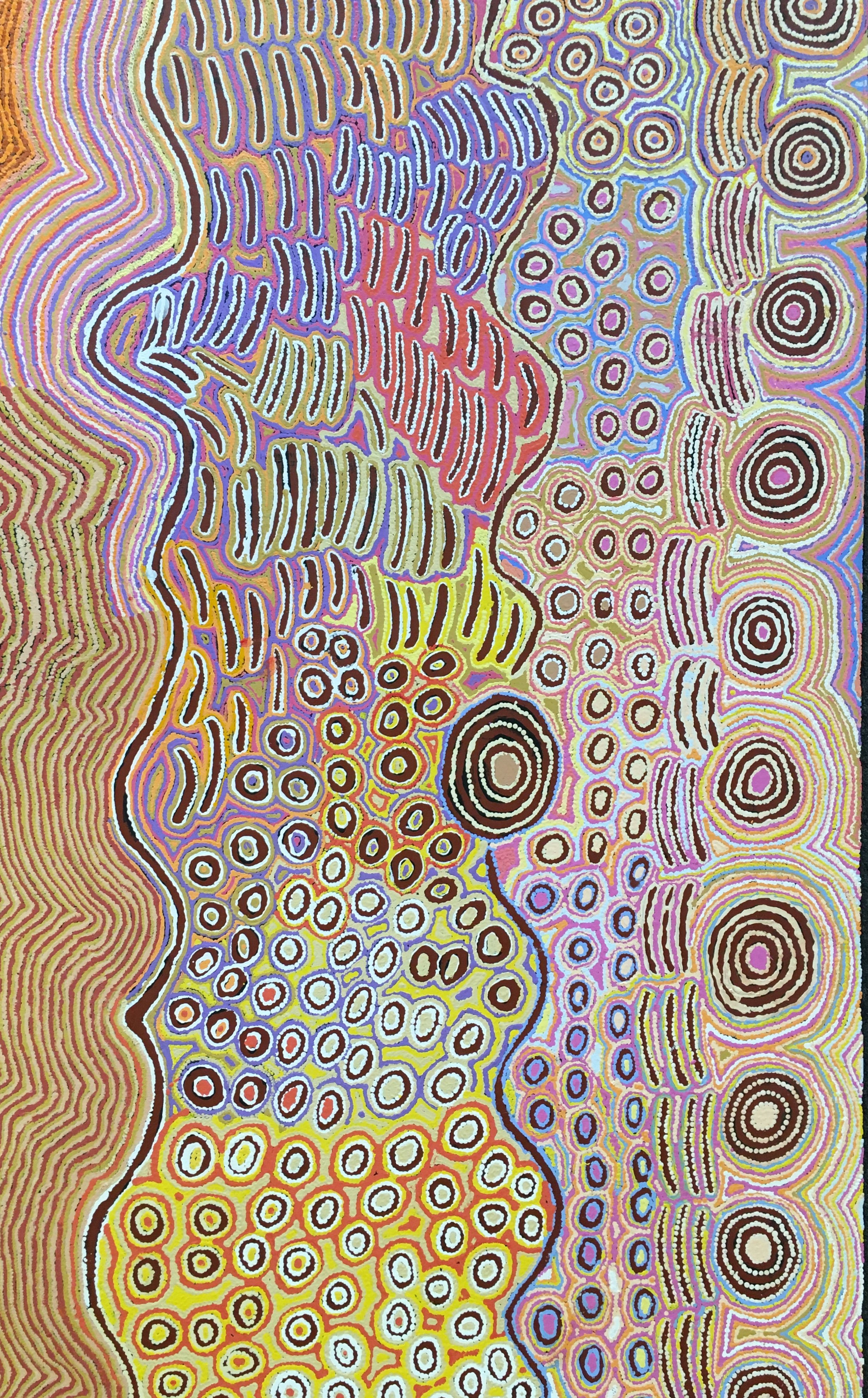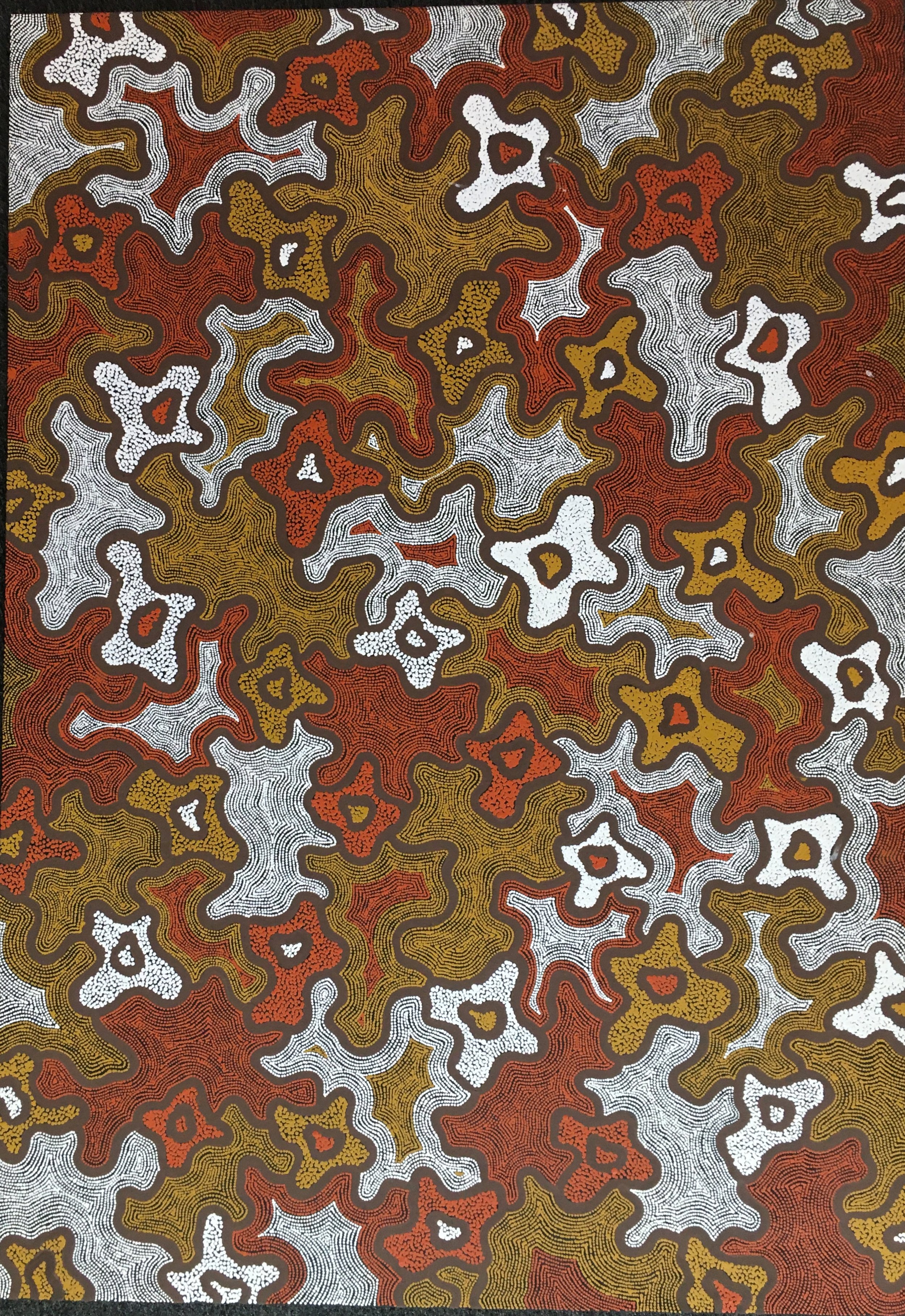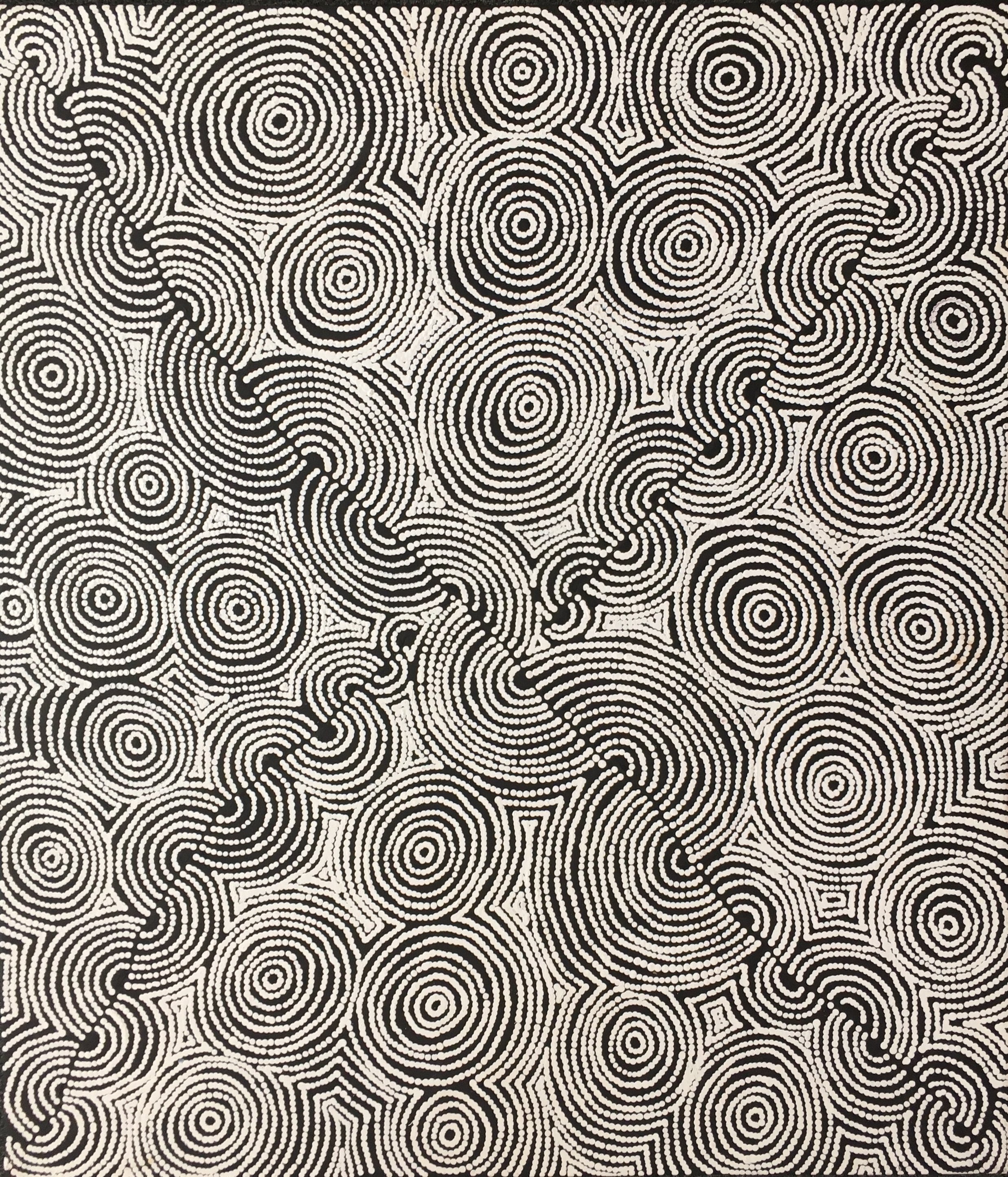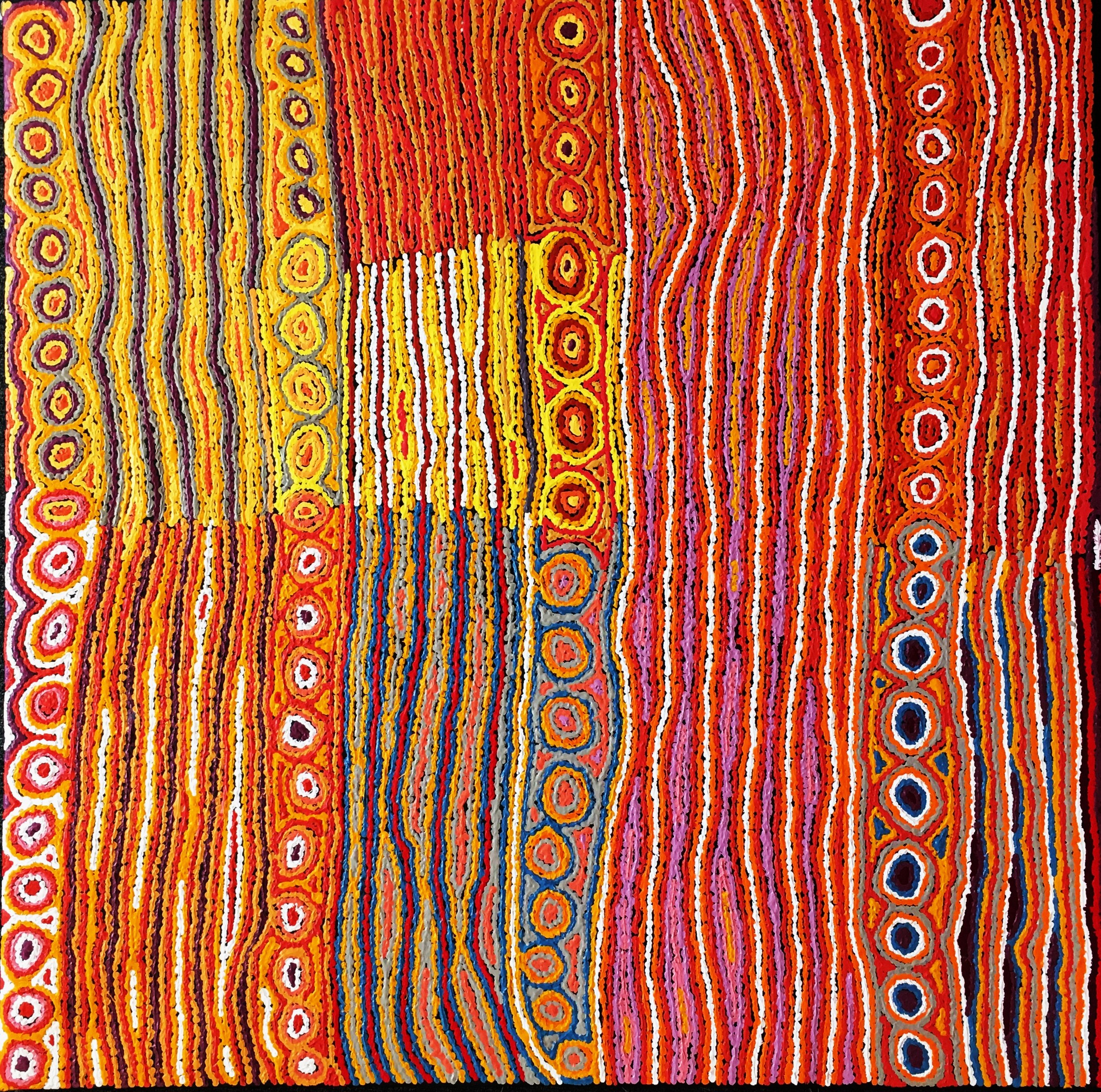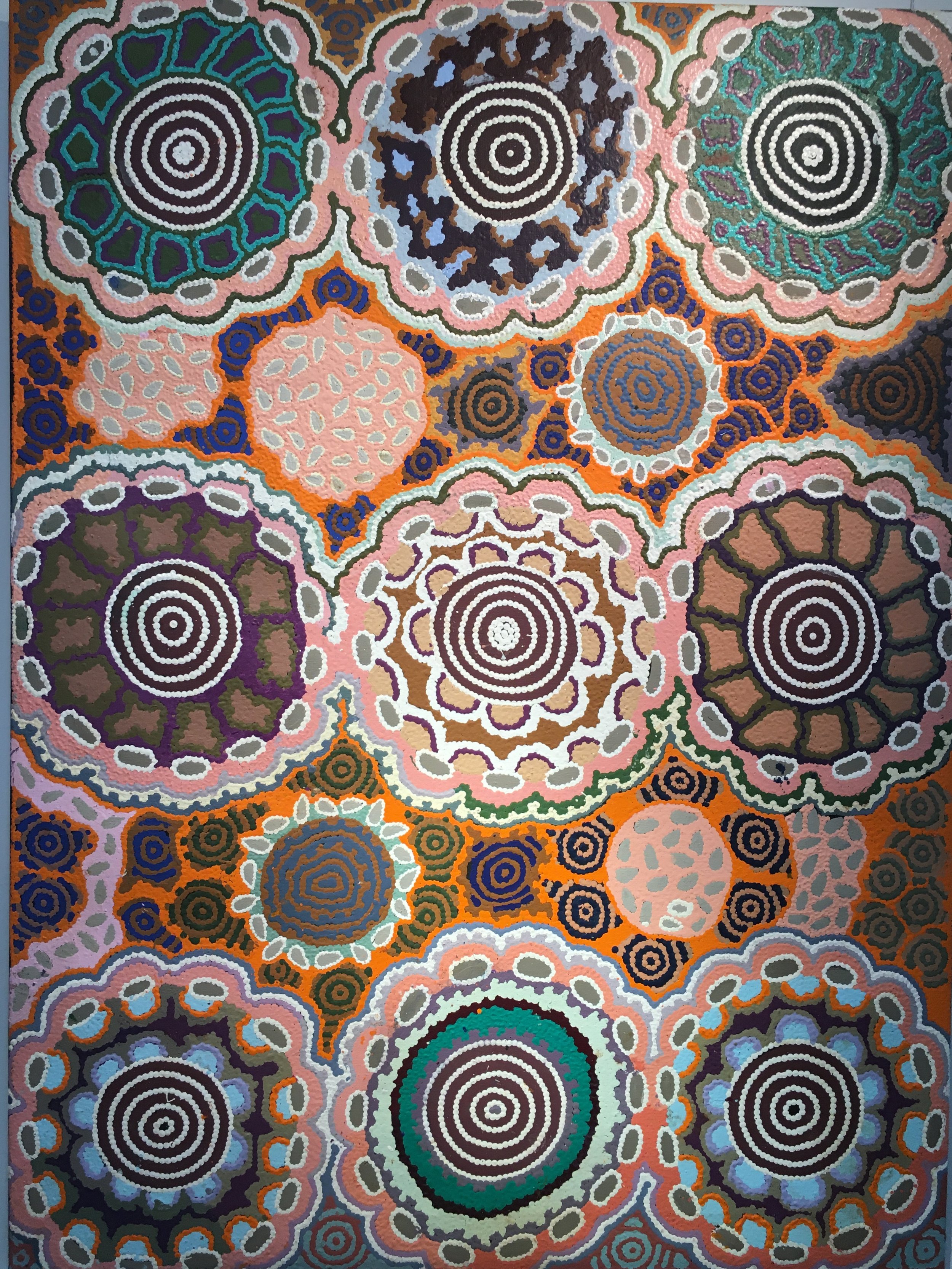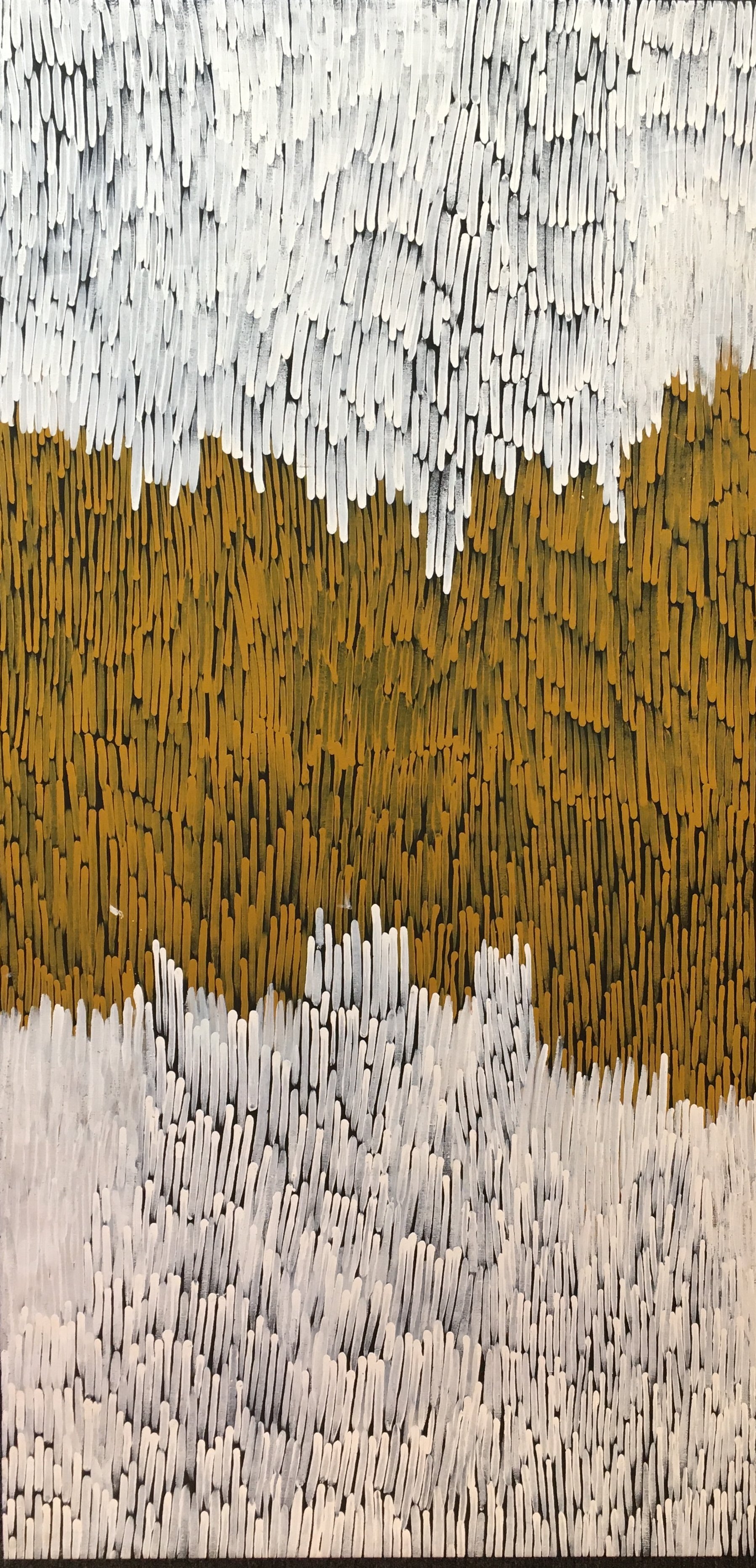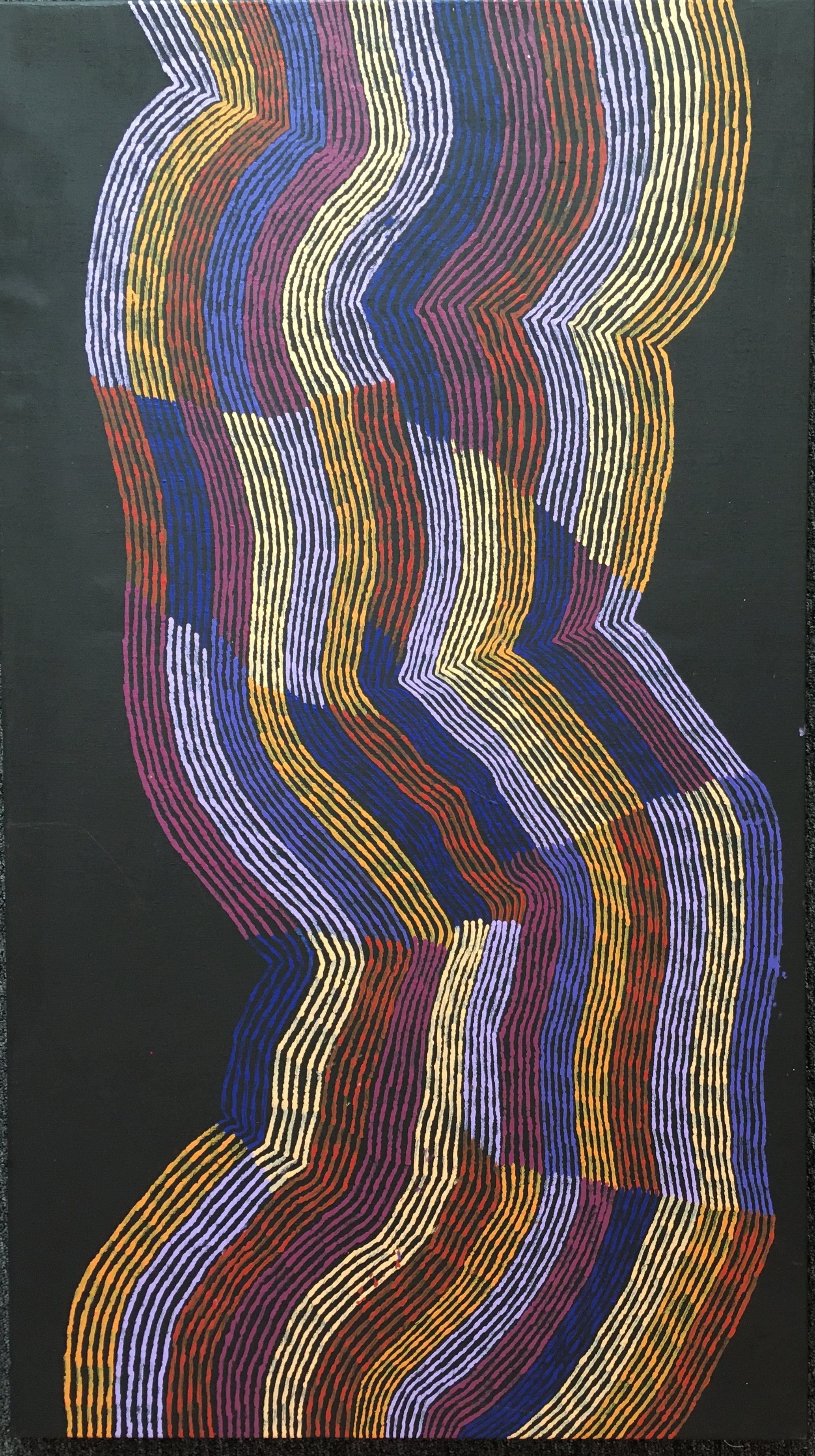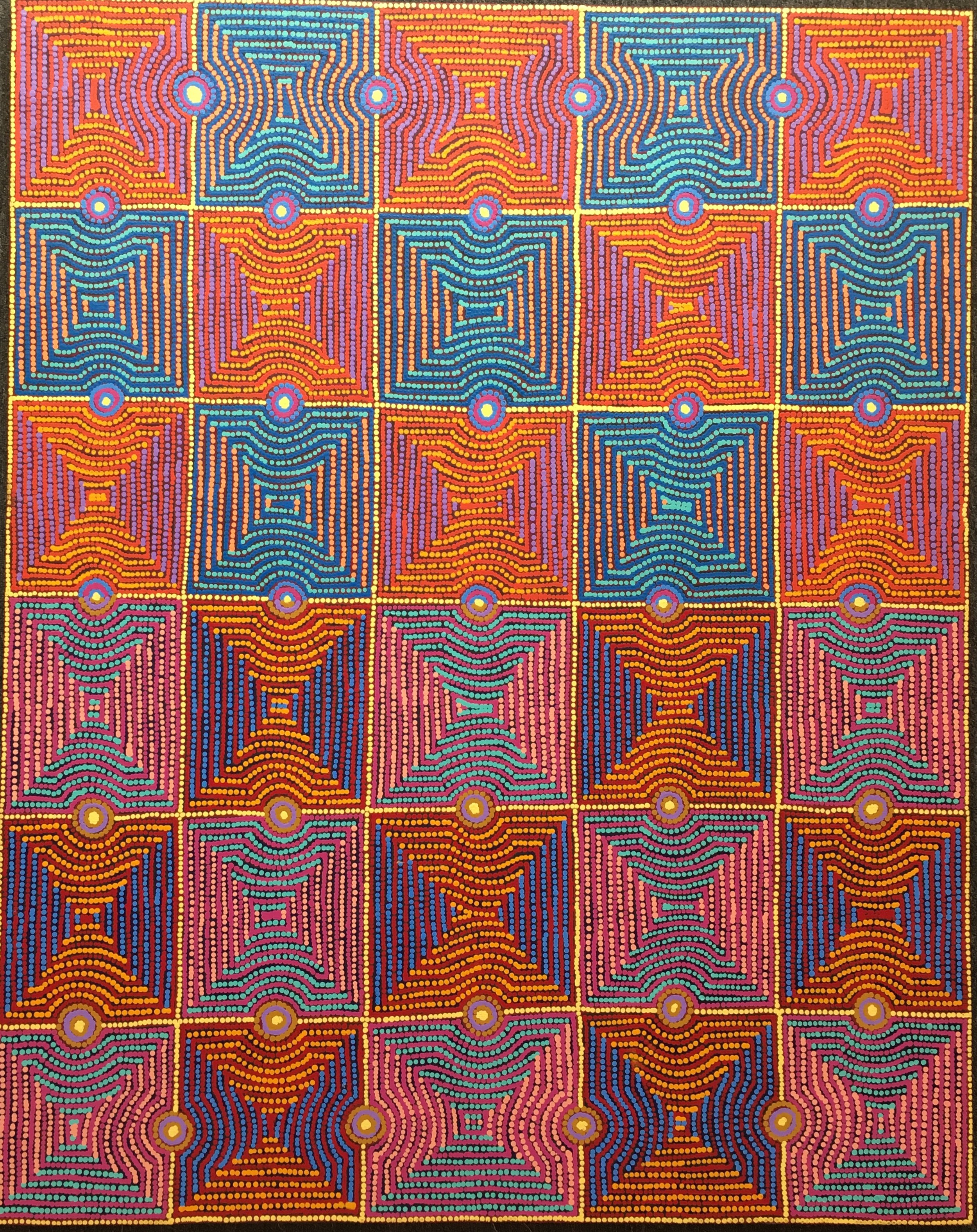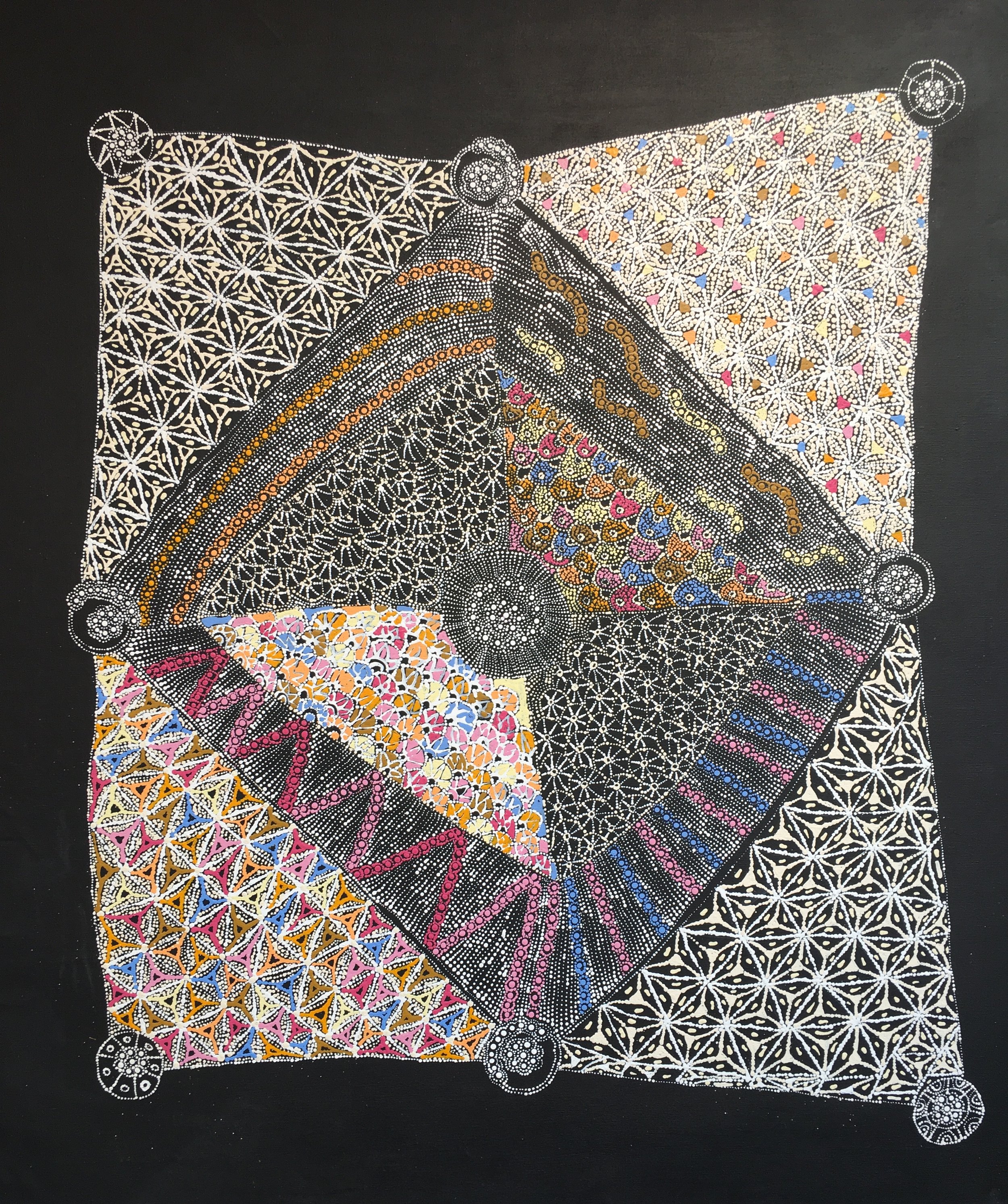The Stories
Lappi Lappi Jukurrpa
The subject of this work is Lappi Lappi, a rock hole near Lake Hazlett, about 90 km northwest of Lake Mackay in Western Australia. The country belongs to the Nampijinpa/Jampijinpa and Nangala/Jangala skin groups. Located in a sheltered basin, the rock hole at Lappi Lappi is a permanent source of water, and is surrounded by country rich is bush tucker. In the time of the Jukurrpa (Dreamtime) many mothers with young children would gather there because it was a safe place to stay. The rock hole at Lappi Lappi is home to the ‘warnayarra’ , a rainbow serpent that travels between various rock holes. One day, women were gathered at the rock hole with their children, singing and dancing. When the ‘warnayarra’ heard the sound pf voices it travelled silently towards them, under the water. When it reached the edge of the rock hole, it rose out of the water and ate them all.
Ngapa Jukurrpa
The site depicted in this painting is Puyurra west of Yuendumu. In the usually dry creek beds are ‘mulju’ (soakages), or naturally occurring wells. The ‘kirda’ (owners) for this site are Nangala/Nampijinpa women and Jangala/Jampijinpa men. Two Jangala men, rainmakers, sang the rain, unleashing a giant storm. The storm travelled across the country from the east to the west, initially travelling with a ‘pamapardu Jukurrpa’ (termite Dreaming)
Lappi Lappi Jukurrpa
The subject of this work is Lappi Lappi, a rock hole near Lake Hazlett, about 90 km northwest of Lake Mackay in Western Australia. The country belongs to the Nampijinpa/Jampijinpa and Nangala/Jangala skin groups. Located in a sheltered basin, the rock hole at Lappi Lappi is a permanent source of water, and is surrounded by country rich is bush tucker. In the time of the Jukurrpa (Dreamtime) many mothers with young children would gather there because it was a safe place to stay. The rock hole at Lappi Lappi is home to the ‘warnayarra’ , a rainbow serpent that travels between various rock holes. One day, women were gathered at the rock hole with their children, singing and dancing. When the ‘warnayarra’ heard the sound pf voices it travelled silently towards them, under the water. When it reached the edge of the rock hole, it rose out of the water and ate them all.
This Jukurrpa belongs to women of the Nakamarra/Napurrurla subsections and to Jakamarra/Jupurrurla men. This Dreaming is associated with a place called Jaralypari, north of Yuendumu. Lakarrara (desert fringe-rush Fimbristylis oxystachya & Fimbristylis eremophils]) is a grass with an edible seed. The seeds are traditionally ground on a large stone (‘ngatinyanu’) with a smaller stone (‘ngalikirri) to make flour. This flour is
